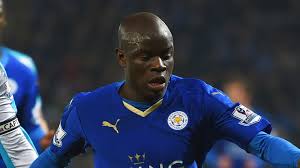 In the 26-year history of the Premier League, it’s difficult to remember many more dramatic shifts in style between Chelsea pre-Maurizio Sarri and Chelsea under the Italian manager.
In the 26-year history of the Premier League, it’s difficult to remember many more dramatic shifts in style between Chelsea pre-Maurizio Sarri and Chelsea under the Italian manager.
Even Arsenal’s transition from George Graham’s defensive-minded football to Arsene Wenger’s artistic attacking was aided by the one-season reign of Bruce Rioch, who had the demeanour of Graham but preached the importance of playing out from the back and loaded his side with creative talent. Chelsea have not had that type of transition manager and Sarri will have to initiate, and complete, a similar reversal himself.
It’s not merely that Chelsea were focused on defending deep and counter-attacking under his predecessor Antonio Conte, it’s that the club have largely stuck to that template throughout the 15 years of Roman Abramovich’s ownership.
Sarri’s task isn’t about simply overhauling the mentality of Chelsea’s players, but changing the perceptions and expectations of supporters too. The last man who attempted something similar at Stamford Bridge, Andre Villas-Boas, lasted half a season, and his replacement Roberto Di Matteo promptly won the Champions League with the most defensive football of Abramovich’s reign.
Chelsea’s style of football has generally been defined by their defensive midfielder. Claude Makelele was the archetypal holding midfielder who never vacated his zone in front of the back four; John Obi Mikel was converted from a talented young creator into a functional holding midfielder; Nemanja Matic was all about physical presence; and N’Golo Kante is a runner and a tackler, but not a particularly spectacular passer.
This season’s shift from Kante to Jorginho at the base of Sarri’s midfield has already proved controversial, despite Chelsea collecting 16 points from their opening six matches. It took only one failure to win (the 0-0 draw with West Ham) before Sarri’s decision was widely questioned.
Conte and Sarri’s approaches could hardly be more different, and you can say something similar for Kante and Jorginho.
Kante has performed excellently over the last three years, starring in title-winning Leicester and Chelsea teams. For both, though, he was playing in a defensive side, with his role to win possession in deep positions and leave creative play to others. His distribution improved during his two years at Chelsea, but he isn’t comparable to the hugely composed Jorginho — a significantly more gifted passer.
Jorginho is the perfect man to carry out Sarri’s philosophy on the pitch, not least because he did precisely the same thing for him at Napoli.
The Italian’s record-breaking performance against West Ham last weekend, where he completed 180 passes — the most in the history of the Premier League — delighted many English observers. Not because Jorginho had broken the record in itself, but because he had broken the record in a match where Chelsea failed to win. English football remains hugely sceptical of statistics in general, particularly those concerning possession football. “Possession for possession’s sake” is the constant criticism.
Jorginho’s 180 passes shouldn’t be considered a particular achievement in itself, but nor does it suggest that the midfielder was being too careful with possession. His pass completion rate was 90 percent — relatively low by his standard — and his 42 backwards passes were all successful, as were his 31 sideways passes. But only 89 of his 107 forward passes were completed, because Jorginho was, on occasion, attempting to thread balls in to the forwards (he played 19 balls to Eden Hazard, and another 10 to Olivier Giroud.)
On three occasions Jorginho created genuinely good goal scoring opportunities — one wasted by Giroud, who failed to connect properly with the ball; one wasted by Hazard, whose touch was unusually sloppy when a firmer pass would have put Giroud through on goal; one wasted by Willian in stoppage time, when he blasted wide from an inside-right position.
The final “expected goals” tally suggested Chelsea should have scored twice from their chances. The problem was clearly poor finishing rather than an absence of creativity.
More than anything, Jorginho’s pass tally was a consequence of West Ham completely standing off him, and the most intriguing analysis of his distribution concerns the locations of Jorginho’s passes.
With Napoli, the most impressive aspect of the Italian’s game was his calmness and confidence when playing out in perilous situations. Napoli would play one-twos on the edge of their own penalty area, provoking opponents into pressing them, before quickly transferring the ball through the lines, cutting through the opposition quickly. Against a defensive-minded West Ham reluctant to move forward from the edge of their own penalty area, that proved impossible.
In that sense, Jorginho might actually enjoy being pressed in Chelsea’s home fixture against Liverpool this weekend. While there’s inevitably more chance he’ll make mistakes in that situation, there’ll be more opportunity for him to demonstrate his coolness and set a high passing tempo, making Chelsea’s football pass-and-move rather than pass-and-pass.
In either situation, whether Chelsea are pinning back the opposition or being pressed, it’s difficult to make a reasonable argument for using Kante in the deepest midfield role. Sarri is a manager who prioritises possession play rather Kante’s primary strengths of running, tackling and intercepting.
There remains a place for the Frenchman in Chelsea’s midfield, particularly in big matches against energetic opposition, but anyone who suggests Sarri should be using Kante rather than Jorginho in a deeper position is ignoring everything we’ve seen from both players over the last three seasons. And also everything Sarri is trying to achieve at Chelsea.
Support InfoStride News' Credible Journalism: Only credible journalism can guarantee a fair, accountable and transparent society, including democracy and government. It involves a lot of efforts and money. We need your support. Click here to Donate
